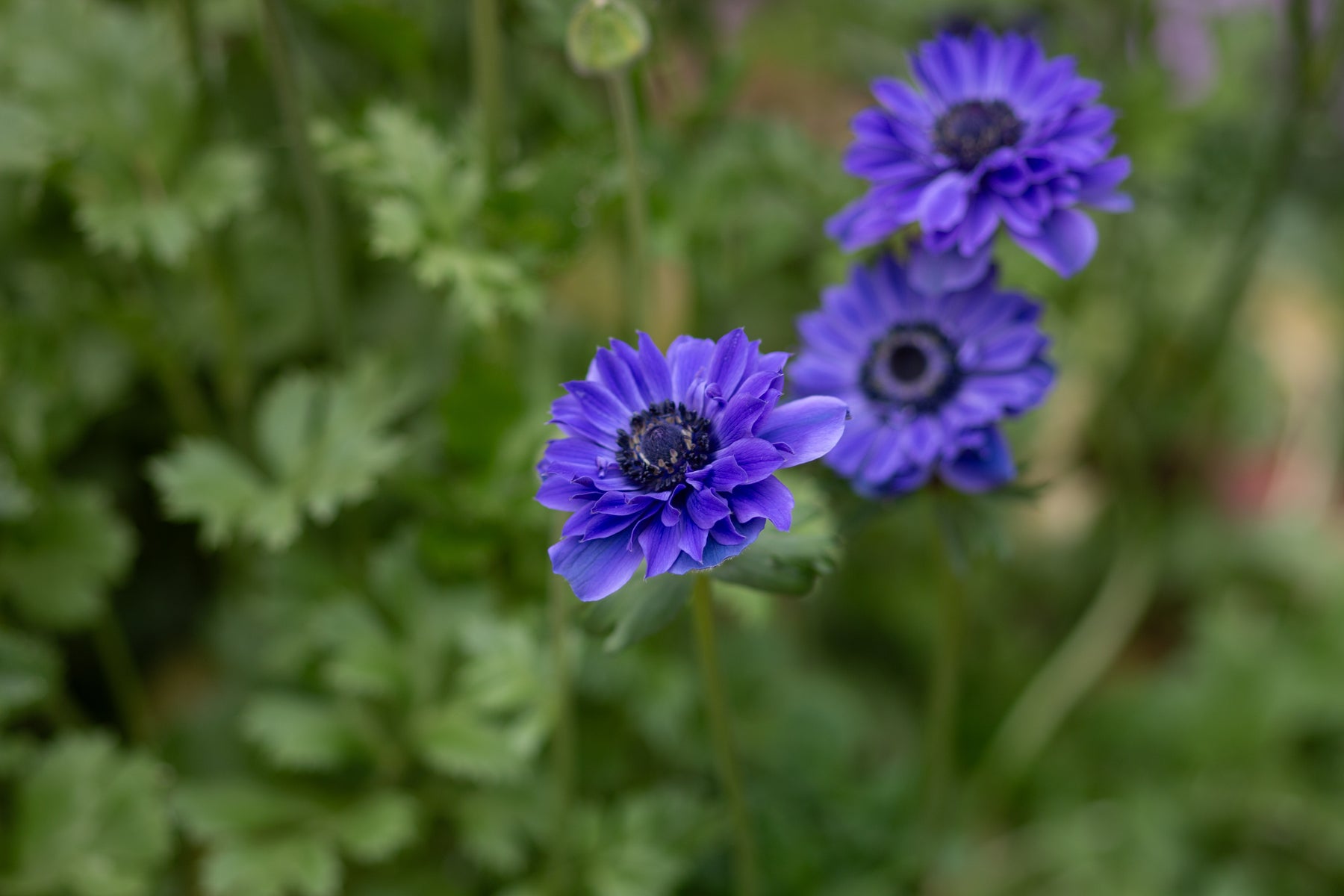
Gone With The Windflower (Anemone)
Gather around flower lovers and get ready to go on this week’s floral adventure. Behold the windflower, more affectionately known as anemone! This little beauty is Mother Nature's way of teasing us with the promise of warmer days ahead. They burst onto the garden scene in gush-worthy hues. When it comes to planting them, well it is as simple as pie!
So, grab your gardening tools (and patience) and get ready to grow gorgeous shades of pink, red, purple, white, blue and mauve blooms from bountiful anemone bulbs.
How to grow anemones
Now is prime time to get those green thumbs in action and plant these low-maintenance lovelies for a splash of colour. Before you go digging though let's talk strategy.

First off, make sure your soil's got good drainage and loosen it to a depth of about 30cm. If it's feeling a bit too dense, toss in some sand to lighten things up. Now, find a spot that's a perfect balance of sunshine and shade – these beauties need a bit of both to thrive. Then it’s time to pop your tuberous rhizomes in the ground, aim for about 2cm deep, spaced out around 2.5cm apart. There’s no need to stress about which way they're facing – as nature will always intervene. Bulbs are amazingly able to pull themselves into the right direction!
Keep your new garden residents hydrated, but don't drown them! Aim for a deep soak every three to four days, especially in the morning. If you've got them in containers, they'll need a bit more TLC, so keep an eye on that moisture level and aim to water them every day or second day. If you do have a saucer under your pot, empty it 20 minutes after watering. You don’t need root rot ruining your flower party.
Where do anemone flowers grow best?
Anemones planted around borders are a match made in heaven. They’re also equally fabulous in containers, provided they have drainage holes. Now, onto the burning question: sun or shade? Well, these blooms are all about finding that sweet spot between the two. Balance the scales with a little sun, a little shade, and they're grooving. On the other hand, if they're basking in the sun, offer them some shade during the hottest part of the day. As for those cosying up in a container, keep them cool by surrounding them with some heat-resistant buds in other containers.
How long do anemones take to grow?
The planting time of anemones are differentiated by early and late planting. Planting now will result in early June flowering. Planting in early winter will bring a profusion of flowers from late September. The later flowering will result in shorter heights and flowering times, therefore you should plant in shade to help encourage stem length.
Do anemones come back every year?
In sunny South Africa, once those anemones have had their time in the spotlight, it's time to bid them farewell – especially in rainy regions where their comeback chances are slimmer than finding a needle in a haystack. Sure, you could lift and store them for a rainy day, but let's face it, fresh is best.
Now, if you're in a dry summer spot, you're in luck – those babies can hang out in the ground all year round! Just make sure they're well-fed with some Hadeco Bulb Food for a vibrant come back next season.

The History of Anemone
The Anemone, also known as the windflower (from the Greek 'daughter of the wind'), holds a special significance linked to one of Ireland's revered figures, Saint Brigid of Kildare. Her tale, steeped in miracles, may shed light on the origin of the flower's name, evoking the wind that carries its essence across the land. Legend has it that Saint Brigid once sought land from the Irish King of Leinster to establish a convent. She insisted that the land they stood upon was ideal, with its adjacent forest for wood, plentiful berries, and a nearby lake for water. When the king refused, she prayed for divine intervention, then requested as much land as her cloak could cover. Though the king doubted, he indulged her, only to witness her cloak expand miraculously to cover vast stretches of land. Thus, the convent flourished, famed for its berry jam made from the forest's bounty. Much like Saint Brigid's cloak, anemones spread effortlessly, a spectacle observed in Jordan and Israel, their native Middle Eastern habitat. With around 120 species, they offer a myriad of colours often accentuated by a striking central hue. In South Africa, hybrids of A. coronaria, A. fulgens, and A. pavonina, known as florist's anemones, are prevalent. These come in single and double forms, the former resembling poppies and referred to as 'de Caen' after their origin in the French town of Caen, while the latter, originating from Ireland and named after the cloaked saint, are known as 'St. Brigid.'
Go on, go outside and plant your windflowers. Happy gardening with anemone!
